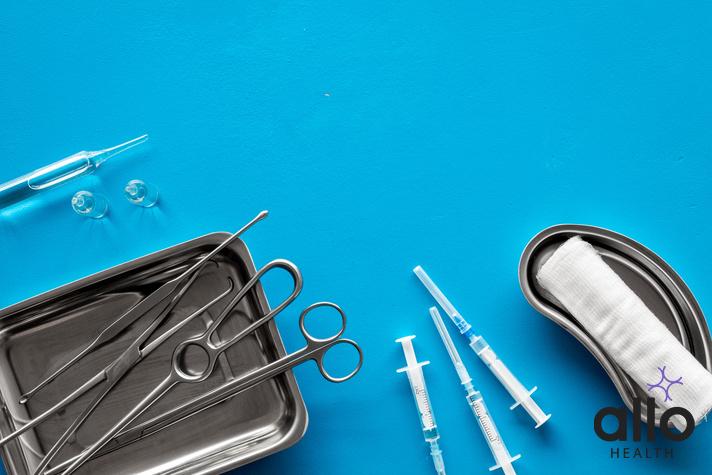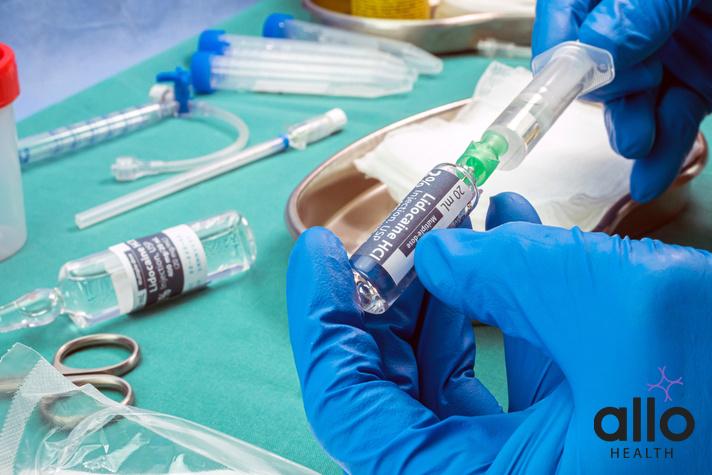Silicone in Penis Cosmetic Surgery: Risks, Benefits, and Considerations

"The following blog article may discuss medical treatments and interventions. However, it is important to note that the information provided is for general educational purposes only and should not be considered as a substitute for professional medical advice, diagnosis, or treatment. Always seek the guidance of a qualified healthcare professional for personalized medical advice.
Book consultation
Medical treatments are complex and should be tailored to individual circumstances. The information presented in this blog may not be applicable to everyone, as each person's medical condition, history, and needs are unique. Only a qualified healthcare professional can evaluate your specific medical situation, consider relevant factors, and provide appropriate recommendations for diagnosis, treatment options, and monitoring.
It is crucial to note that self-diagnosis, self-medication, or relying solely on the information provided in this blog for treatment decisions can have serious health consequences. "
In recent years, the search for physical enhancement has led to an increased interest in cosmetic procedures, including those targeting penile aesthetics and function. One of the materials often utilized in such surgeries is medical-grade silicone. However, the use of silicone in penile augmentation surgeries raises various considerations, including potential risks and benefits. This article explores the use of silicone in penis cosmetic procedures, shedding light on its applications, associated complications, and important considerations for individuals contemplating such surgeries.
What is Silicone and It’s Uses in Penile Enlargement?
Silicone is a synthetic material known for its versatility and biocompatibility, commonly used in various medical and cosmetic applications. In penile enlargement procedures, medical-grade silicone finds several uses:
- Structural Support: Silicone implants or rods are utilized to provide structural support and enhance the girth and length of the penis, catering to individuals seeking cosmetic enhancement.
- Volume Enhancement: Silicone injections or microdroplets are employed to augment penile size, offering a non-surgical alternative for individuals desiring a larger genital size.
- Cosmetic Enhancement: Procedures involving silicone aim to improve penile aesthetics, addressing concerns related to size, shape, and symmetry for individuals seeking aesthetic improvements.
- Girth Enhancement: Silicone sleeves or rods are inserted to increase penile girth, allowing for a more substantial appearance both flaccid and during erection.
- Potential Risks: While silicone offers benefits in penile enlargement, it also presents risks such as foreign body reactions, loss of sensation, and the formation of granulomas, necessitating careful consideration and informed decision-making by individuals considering such procedures.
Mechanism of Action

The mechanism of action of silicone in penile enlargement involves several key factors:
- Volume Enhancement: Silicone implants or injections provide immediate volume augmentation, enhancing the girth and sometimes length of the penis.
- Structural Support: Silicone implants or rods serve to support and maintain the desired shape and size of the penis, especially in cases of penile curvature correction or girth enhancement.
- Tissue Integration: Medical-grade silicone is biocompatible, allowing for integration with surrounding penile tissues over time, creating a more natural appearance.
- Blood Flow: Proper placement of silicone implants or injections aims to preserve healthy blood flow to the penis, crucial for maintaining erectile function and sensation.
- Cosmetic Enhancement: By filling and shaping the penile skin, silicone contributes to a smoother and more aesthetically pleasing appearance, potentially boosting confidence and self-esteem.
- Stimulation of Collagen Production: The presence of silicone may stimulate collagen production in the penile skin, contributing to improved elasticity and overall tissue health.
- Tissue Expansion: Silicone injections or implants can lead to gradual tissue expansion, resulting in a larger and more substantial penile appearance over time.
In summary, silicone facilitates penile enlargement through volume enhancement, structural support, tissue integration, and cosmetic enhancement, ultimately aiming to achieve the desired aesthetic and functional outcomes for individuals undergoing penile augmentation procedures.
Advantages of Using Silicone in Penis Enlargement
Silicone, when used in penis enlargement procedures, offers several advantages:
- Durable Results: Medical-grade silicone is known for its durability, providing long-lasting results compared to other augmentation methods such as fat injections.
- Minimized Scarring: Silicone implants or injections often require smaller incisions, resulting in minimized scarring and improved cosmetic outcomes compared to more invasive surgical techniques.
- Flexibility: The material’s flexibility ensures a natural look and feel, adapting well to the body’s movements.
- Minimal Rejection Rate: Compared to other materials, silicone has a lower risk of being rejected by the body, reducing complications related to immune response.
- Customization: Surgeons can tailor silicone-based procedures to meet individual patient needs, allowing for personalized augmentation based on desired outcomes and anatomical considerations.
- Quick Recovery: Procedures involving silicone tend to have relatively quick recovery times, allowing for a faster return to daily activities.
- Reversible: If necessary, the procedure can be reversed, and the implants removed or replaced, providing an option for those who may change their minds or seek adjustments.
Different Ways to Use Silicone in Penis Enlargement

- Silicone Injections: Medical-grade silicone oil or silicone microdroplets may be injected into the penile tissue to enhance girth and size. This method offers a relatively straightforward outpatient procedure for individuals seeking immediate results in penile enlargement.
- Silicone Implants: Insertion of silicone implants involves the surgical placement of crescent-shaped pieces or flexible silicone rods within the penile tissue to augment length and girth. While providing a more permanent solution compared to injections, this method carries a higher risk of complications such as loss of sensation and foreign body reactions.
- Silicone Sleeves or Rods: Curved silicone sleeves or bendable rods may be utilized to create a more natural appearance and feel, enhancing both aesthetic and functional aspects of penile enlargement. These prosthetic devices are designed to mimic the natural anatomy of the penis while providing structural support and increased volume.
- Combination Procedures: Some surgeons may employ a combination of silicone injections, implants, or prosthetic devices to achieve optimal results in penile augmentation. This approach allows for customized treatment plans tailored to individual patient needs, considering factors such as desired size increase, existing penile anatomy, and risk factors for complications.
- Fat Transfer with Silicone: In certain cases, fat injections may be combined with silicone implants or injections to augment penile size and contour. This approach aims to utilize the patient’s own fat tissue for additional volume enhancement while complementing the structural support provided by silicone materials.
Procedure and Recovery
Procedure of Silicone Penile Enlargement:
- Consultation and Assessment: Patients undergo comprehensive consultations with surgeons to discuss goals, risks, and suitability for the procedure, considering factors such as erectile function and penile anatomy.
- Surgical Intervention: Depending on the chosen technique, surgeons may perform silicone injections, insert silicone implants, or create customized silicone sleeves or rods for augmentation.
- Anesthesia and Incisions: Anesthesia is administered to ensure patient comfort during the procedure, which involves making incisions for silicone placement, potentially including ligament incisions for length enhancement.
- Silicone Placement: Surgeons meticulously place silicone implants or inject silicone in desired locations, ensuring symmetry and proportionality for aesthetic enhancement.
- Closure and Recovery: Following silicone placement, incisions are closed, and patients are monitored before discharge for outpatient recovery.
Recovery After Silicone Penile Enlargement:
- Immediate Post-Op: Patients may experience temporary discomfort, swelling, and restricted activity, necessitating pain management and wound care.
- Longer-Term Recovery: While recovery times vary, patients typically resume normal activities gradually, avoiding strenuous exercise and sexual activity for a specified period.
- Monitoring and Follow-Up: Surgeons monitor patients for complications such as infection or loss of sensation, adjusting treatment as needed.
- Patient Education: Patients receive comprehensive instructions on post-operative care, including hygiene practices, medication management, and signs of complications.
- Outcome Evaluation: Patients assess outcomes over time, noting improvements in size and function, while remaining vigilant for potential complications necessitating further intervention.
Cost of Silicone Penile Enlargement
The cost of silicone penile enlargement in India varies depending on several factors, including the procedure’s extent, the surgeon’s expertise, and the facility chosen. Here’s a summary of the costs:
- Starting Cost: Prices start from INR 1,10,000 (approximately USD 1,500) for basic penis enlargement procedures.
- Average Cost: The average cost for penis enlargement in India is around INR 1,40,000 (approximately USD 1,900), with some variations based on specific needs and complexity of the procedure.
- Cost Range: The price range for these surgeries can reach up to INR 1,80,000 (approximately USD 2,400) depending on various factors like the chosen hospital and the specifics of the surgery.
- Inclusions: These costs typically cover the surgical procedure itself, but additional expenses may apply for post-operative care, consultation, and any required follow-up visits.
- Affordability: Compared to other countries, penile enlargement surgeries in India are available at more affordable rates, making it a preferred destination for this type of medical procedure.
It’s essential for individuals considering this surgery to consult with healthcare providers to get a detailed understanding of the costs involved, including any potential additional expenses for comprehensive care.
Risks and Considerations
- Foreign Body Reaction: Silicone injections or implants can trigger adverse reactions within the body, leading to inflammation, discomfort, and the formation of granulomas. This can result in health complications, including scrotum lymphedema or even cancer cell development.
- Loss of Sensation: Some individuals may experience a reduction in penile sensation following silicone-based procedures, impacting sexual function and satisfaction. This risk underscores the importance of considering potential sensory changes before undergoing augmentation surgery.
- Health Complications: The introduction of silicone into the body poses inherent risks, such as infection, adverse reactions, and catastrophic complications like moderate erectile dysfunction or the accumulation of lymph fluid.
- Recovery and Downtime: Patients should anticipate a period of recovery characterized by discomfort, swelling, and restricted activity. The downtime after surgery varies depending on the procedure, but it’s crucial for individuals to follow post-operative instructions diligently to optimize healing and minimize complications.
- Insurance Coverage: It’s essential to explore insurance policies regarding elective cosmetic procedures, as coverage may vary. Patients should inquire about potential financial implications and consider the overall cost of surgery, including any additional procedures or revisions that may be necessary.
Conclusion
The utilization of silicone in penile cosmetic surgery offers the potential for enhanced aesthetics and function, yet it also poses significant risks and considerations. Individuals contemplating such procedures must weigh the benefits against the potential complications, ensuring informed decision-making and prioritizing their overall health and well-being. Ultimately, consulting with experienced healthcare professionals and maintaining realistic expectations are paramount in navigating the complexities of penile augmentation surgeries involving silicone.
Most Asked Questions
-
What is silicone, and how is it used in penile cosmetic surgery?
Silicone is a type of material that is durable and safe for use in the human body. In penile cosmetic surgery, medical-grade silicone is often used to enhance the size and shape of the penis. It can be injected or inserted into the penis to provide volume and support.
-
Are there any risks or complications associated with silicone use in penile augmentation surgeries?
Yes, there are potential risks and complications to consider. These may include inflammation, discomfort, and the formation of granulomas (small bumps). Additionally, there is a risk of loss of sensation in the penis, infections, and more serious complications like scrotum lymphedema or the development of cancer cells.
-
What should I expect during the surgical procedure and recovery period?
Penile augmentation surgeries involving silicone are typically outpatient procedures, meaning you can go home the same day. During the recovery period, you may experience some discomfort, swelling, and restricted activity. It’s essential to follow your surgeon’s instructions carefully to promote healing and minimize complications.
-
How can I make an informed decision about undergoing penile cosmetic surgery with silicone?
Before deciding on surgery, it’s crucial to have a thorough consultation with a qualified healthcare provider. They will discuss the risks, benefits, and alternatives to silicone-based procedures, helping you make an informed decision. Additionally, inquire about insurance coverage for elective cosmetic procedures to understand the financial implications.







































